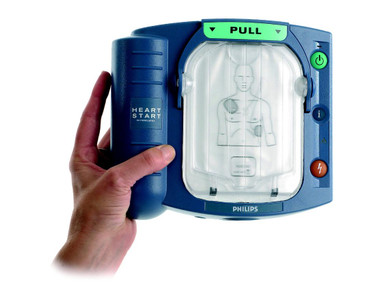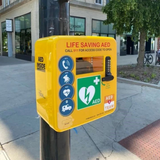What is the best home defibrillator?
When most people think of a defibrillator, they think of the scenes on TV dramas when a defibrillator is used in a hospital room and everyone has to stand back. Although defibrillators are of course used in hospitals, many people don’t realised that they are also located in various settings across the country.
You can find a defibrillator in your local town, supermarket, workplace, child’s school, sports facility and even at home. For those with pre existing heart conditions, many opt to purchase a defibrillator that they can keep at home for peace of mind should an emergency occur, they have a defibrillator at hand to help.
With this, we’ve pulled together some tips to help you find the best home defibrillator.
Who will need the defibrillator?
Chances are, if you are purchasing a defibrillator for your home it is because somebody you live with has an already known heart condition. Considering who in your household may most likely need a defibrillator can help you decide which one to opt for. For example, if the defibrillator is needed for a child, you would need to look for a defibrillator that provides paediatric electrode pads.
Lightweight
The more lightweight the defibrillator, the better as it means you can quickly carry it in an emergency. If it is lightweight it is also easy to transport in the car if you take a trip out or go away for a few days.
Location and storage
As the AED will be located in your home, you more than likely don’t need to worry about storing it in a metal cabinet. Having it in a vibrant coloured case however means that it can be easily found when needed the most whilst also ensuring it doesn’t suffer from wear and tear. Things like scratches, bumps or if it is dropped are all things to consider when you think about where you want to store your defibrillator
Ease of use
The beauty of all defibrillators is that they are designed for ease of use. It doesn’t matter if you are a heart surgeon or have never had health and safety training before, you can still use a defibrillator. They all come with audio and visual prompts to guide you through the process meaning that whichever defibrillator you choose for your home, you always have a step by step guide assisting you through the process.
Taking all of this into consideration will help you choose the best defibrillator for your home. For example, a defibrillator with a rating of IP24 would most likely be more than suitable for your home. This is because it means the defibrillator is protected from small but solid objects (such as your fingers) as well as water splashing. If you’d prefer additional protection however, a rating of IP55 covers all solid objects, is protected from water jets and prevents dust getting inside (although isn’t fully dust proof).
Some of the lightest defibrillators start at just over one kilogram making them extremely lightweight and easy to carry. Heavier defibrillators however only tend to reach just over the three kilograms. When considering the weight, it is down to you whether being as lightweight as possible is your most important concern.
Not all defibrillators come with paediatric electrode pads so you may need to buy these separately. Most defibrillators such as Heartsine, Powerheart, Phillips and Zoll either have child electrode pads or universal electrode pads.
With so many defibrillators on the market, we understand that picking the best defibrillator for your home can be difficult but, hopefully we have helped with this. If you are looking for a lightweight, protected, easy to use and versatile defibrillator, we believe your best options are Heartsine Samaritan Pad, Powerheart G5 Intellisence Defibrillator or the Phillips Heartstart HS1.
See our full range here:
https://risk-assessment-products.co.uk/home-defibr...
Recent Posts
-
What is CPR?
Knowing the basics of first aid and how to deliver CPR (cardiopulmonary resuscitation) can make the …17th Nov 2024 -
What is a sudden cardiac arrest (SCA)?
Sudden Cardiac Arrest (SCA) is a critical medical emergency where the heart abruptly ceases to funct …17th Nov 2024 -
Empowering Communities: The Lifesaving Impact of CPR on Restart a Heart Day
Every year, on and around October 16th, an important event takes place - Restart a Heart Day. This a …16th Oct 2023




